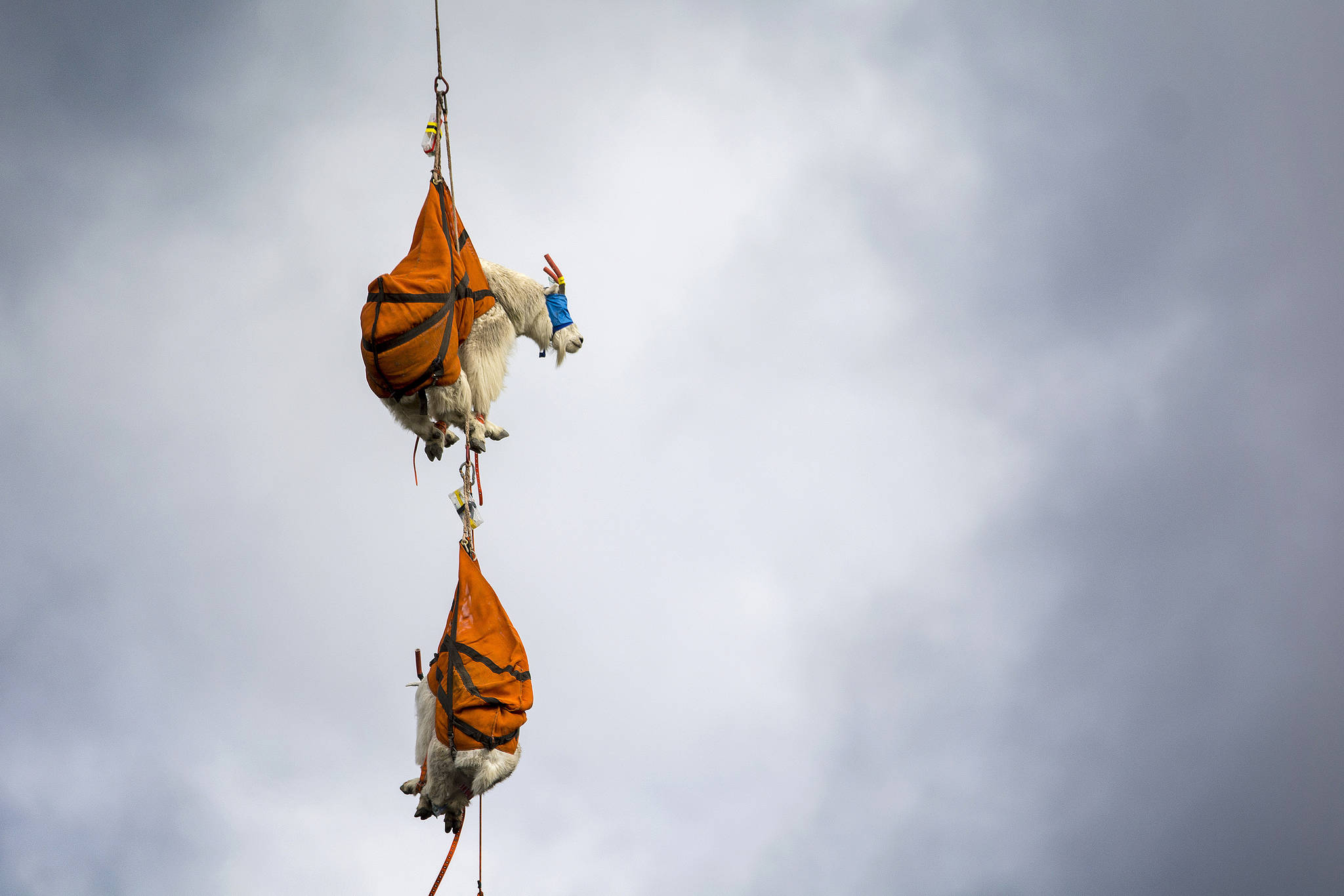Starting Friday, a coalition of state and federal agencies, with support from local tribes, began the third two-week round of translocating mountain goats from Olympic National Park and Olympic National Forest to the northern Cascade Mountains. Since September 2018, 174 mountain goats have been translocated.
The National Park Service, state Department of Fish & Wildlife and the Forest Service are trying to re-establish and connect depleted populations of mountain goats in the Washington Cascades while removing non-native goats from the Olympic Mountains. Mountain goats were introduced to the Olympics in the 1920s.
Fish & Wildlife plans to release the mountain goats at seven sites in the North Cascades National Forests this round.
“A project of this magnitude would be impossible without our partner agencies and the expertise and cooperation of hundreds of people,” said Olympic National Park Wildlife Branch Chief Dr. Patti Happe. “The interagency collaboration and the support from everyone involved is extraordinary.”
Capture and translocation may continue into 2020 depending on this year’s results.
Trail Impacts and Road Closures
Mount Ellinor in Olympic National Forest will be an area of focus for the capture crew this round. The Mount Ellinor trails system and some Forest Service roads will be closed to the public starting the evening of Aug. 18 until the morning of Aug.30.
The two staging areas for the mountain goat capture operations will be closed to public access. One staging area is located in Olympic National Forest in the Hamma Hamma. The other staging area is located on Hurricane Hill Road beyond the Hurricane Ridge Visitor Center in Olympic National Park.
Project Background
In May 2018, the population of mountain goats was estimated at 725.
A helicopter crew will use immobilizing darts and net guns to capture mountain goats and transport them in specially made slings to the staging areas.
The animals are cared for by veterinarians before WDFW wildlife managers transport them to staging areas in the north Cascades for release. To maximize success, goats are airlifted in their crates by helicopter directly to alpine habitats that have been selected for appropriate characteristics.
Mountain goats follow and approach hikers because they are attracted to the salt from their sweat, urine, and food. That behavior is less likely in the north Cascades where visitors are more widely distributed than those at Olympic National Park, said Dr. Rich Harris, a WDFW wildlife manager who specializes in mountain goats.
“In addition, the north Cascades has natural salt licks, while the Olympic Peninsula has virtually none,” Harris said. “We’d expect salt hunger to be lower in goats that have natural sources available to them.”
Volunteers from the Point No Point Treaty Council, Quileute Tribe, Quinault Indian Nation, Skokomish Indian Tribe, and Port Gamble S’Klallam Tribe will also be assisting at the staging areas in the Olympics.
For more information about mountain goats in Washington State, see WDFW’s website at wdfw.wa.gov/species-habitats/species/oreamnos-americanus.
For more information and updates on the project, visit nps.gov/olym/planyourvisit/mountain-goat-capture-and-translocation.htm.


